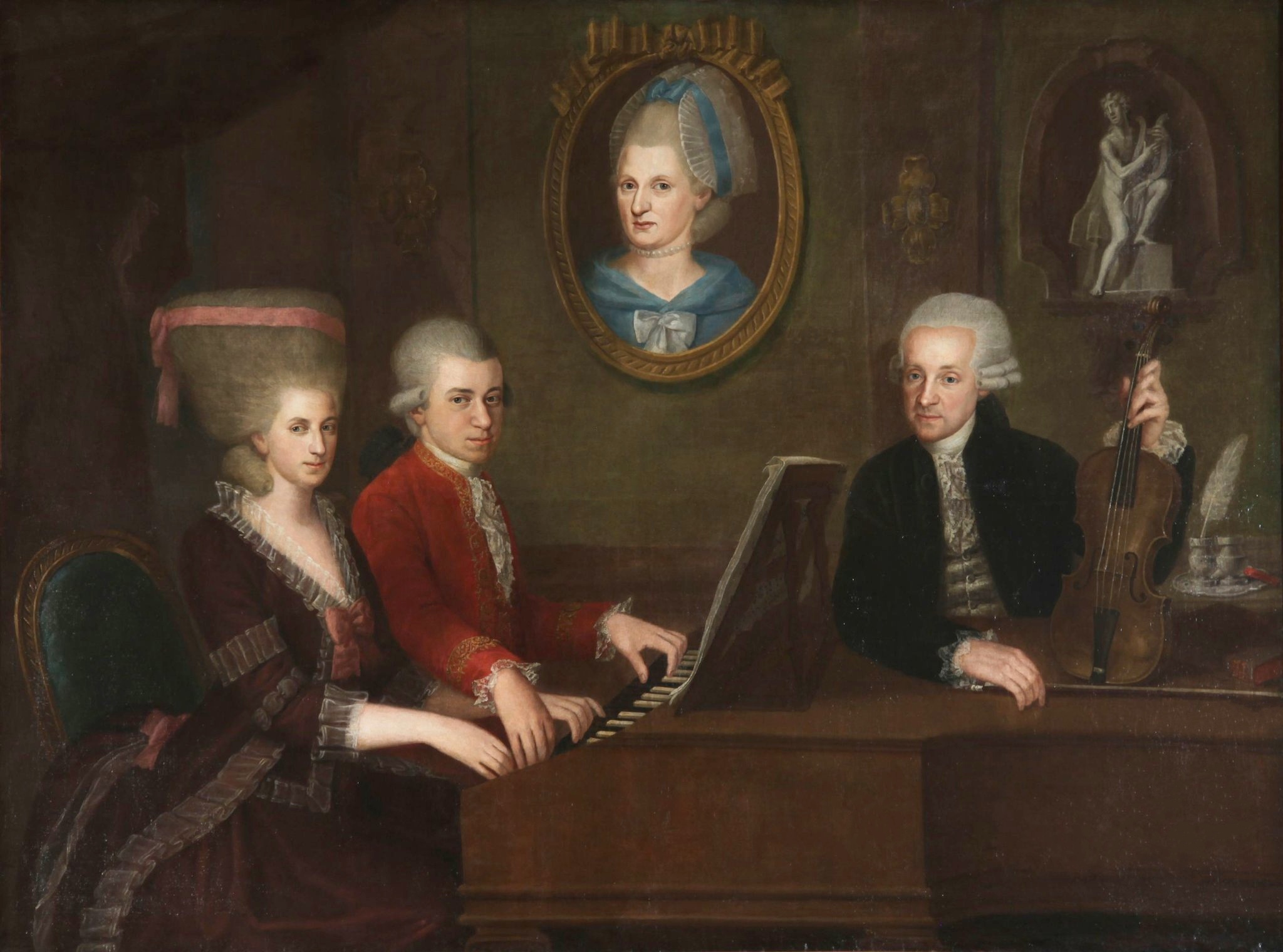String Quartet No. 15 (Mozart) on:
[Wikipedia]
[Google]
[Amazon]

Performance of String Quartet No. 15
by the

Wolfgang Amadeus Mozart
Wolfgang Amadeus Mozart (27 January 17565 December 1791), baptised as Joannes Chrysostomus Wolfgangus Theophilus Mozart, was a prolific and influential composer of the Classical period. Despite his short life, his rapid pace of composition r ...
's String Quartet No. 15 in D minor, K. 421/417b is the second of the Quartets dedicated to Haydn and the only one of the set in a minor key
In Western music, the adjectives major and minor may describe a chord, scale, or key. As such, composition, movement, section, or phrase may be referred to by its key, including whether that key is major or minor.
Intervals
Some intervals may ...
. Though undated in the autograph, it is believed to have been completed in 1783, while his wife Constanze Mozart
Maria Constanze Cäcilia Josepha Johanna Aloysia Mozart (née Weber; 5 January 1762 – 6 March 1842) was a trained Austrian singer. She was married twice, first to Wolfgang Amadeus Mozart; then to Georg Nikolaus von Nissen. She and Mozart had six ...
was in labour with her first child Raimund. Constanze stated that the rising string figures in the second movement corresponded to her cries from the other room.
Structure
Average performances of the whole string quartet vary in length from 23 to 33 minutes. It is in fourmovements
Movement may refer to:
Common uses
* Movement (clockwork), the internal mechanism of a timepiece
* Motion, commonly referred to as movement
Arts, entertainment, and media
Literature
* "Movement" (short story), a short story by Nancy Fu ...
:
# Allegro moderato
# Andante (F major
F major (or the key of F) is a major scale based on F, with the pitches F, G, A, B, C, D, and E. Its key signature has one flat. Its relative minor is D minor and its parallel minor is F minor
F minor is a minor scale based on F, consis ...
)
# Menuetto and Trio (the latter in D major
D major (or the key of D) is a major scale based on D, consisting of the pitches D, E, F, G, A, B, and C. Its key signature has two sharps. Its relative minor is B minor and its parallel minor is D minor.
The D major scale is:
:
Ch ...
). Allegretto
# Allegretto ma non troppo
The first movement is characterized by a sharp contrast between the aperiodicity of the first subject group, characterized by Arnold Schoenberg
Arnold Schoenberg or Schönberg (, ; ; 13 September 187413 July 1951) was an Austrian-American composer, music theorist, teacher, writer, and painter. He is widely considered one of the most influential composers of the 20th century. He was as ...
as "prose-like," and the "wholly periodic" second subject group. In the Andante and the Minuet, "normal expectations of phraseology are confounded." The main part of the Minuet is in minuet sonata form, while "the contrasting major-mode Trio ... is ... almost embarrassingly lightweight on its own ... utmakes a wonderful foil to the darker character of the Minuet." The last movement is a set of variations. The movement ends in a picardy third
A Picardy third, (; french: tierce picarde) also known as a Picardy cadence or Tierce de Picardie, is a major chord of the tonic at the end of a musical section that is either modal or in a minor key. This is achieved by raising the third of the ...
.
Notes
ReferencesSources
* * * *External links
* *Performance of String Quartet No. 15
by the
Borromeo String Quartet
The Borromeo String Quartet is an American string quartet, in residence at the New England Conservatory since 1992. They have performed throughout North and South America, Europe, and Asia, at numerous festivals and in many distinguished chamber mu ...
from the Isabella Stewart Gardner Museum
The Isabella Stewart Gardner Museum is an art museum in Boston, Massachusetts, which houses significant examples of European, Asian, and American art. Its collection includes paintings, sculpture, tapestries, and decorative arts. It was founded ...
in MP3
MP3 (formally MPEG-1 Audio Layer III or MPEG-2 Audio Layer III) is a coding format for digital audio developed largely by the Fraunhofer Society in Germany, with support from other digital scientists in the United States and elsewhere. Origin ...
format
#15
Compositions in D minor
1783 compositions
{{chamber-composition-stub